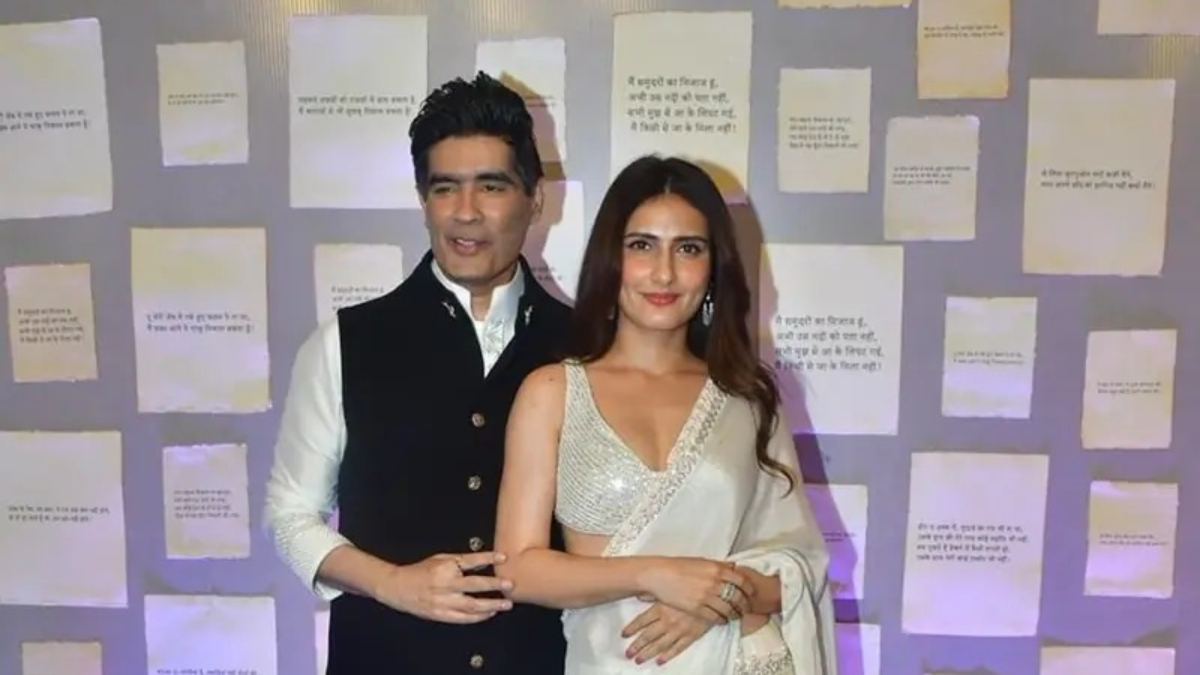Manish Malhotra has been in showbiz for more than three decades. By now, he can be called a doyen. It’s not just storytelling but style too that makes cinema impressionable and inspiring. And he has mastered the art long back. And now, the ace fashion and costume designer ventures into film production with Gustaakh Ishq, a film that salutes the old school romance Hindi cinema abandoned midway. It stars Vijay Varma, Fatima Sana Shaikh, and the always refined Naseeruddin Shah.
In an exclusive interview with Firstpost, Manish Malhotra spoke about his idea to step into film production, the evolution of style and fashion from the time he began till now, and the films that represent the essence of true-blue romance and passion.
Edited excerpts from the interview
You have two films coming up as a producer- Gustaakh Ishq and Saali Mohabbat. Is love still as flawed, complex, frustrating as it used to be before?
The love of Gustaakh Ishq is in complete contrast to the love of Saali Mohabbat, which speaks of me as a producer, wanting to do different versions of love. The love of Gustaakh Ishq is very beautiful. Both the characters are also very beautiful as people. Their love is honest, that is the kind of love that we miss today. Dialogues are one of the biggest strengths of Vibhu the director and the way the characters communicate with each other is lovely. This is something that we don’t get to see often these days. The love of today is more situational. We call it Situationship or Nanoship. But after watching this film, every girl will be looking out for a Vijay Varma kind of a lover, and every boy for someone like Fatima.
You have been a part of the industry for more than three decades. How much do you feel fashion and style have evolved in these 30 years?
There were a lot of actors that were coming in when we started. There were 21 heroines who started their careers in 1991. And then directors like Karan Johar, Aditya Chopra , Dharmesh Darshan, Sanjay Leela Bhansali, Farah Khan also came in. All of them did phenomenal work, especially in terms of music. It became a staple, a statement. Through Kabhi Khushi Kabhie Gham, music became a lot more popular, especially the Indo-Western outfits, those songs that struck a chord with the NRI culture. But it was Jab We Met which I did that changed quite a few things. The glamorous heroine became a part of the homeland. Everything became more real- Kurtis, denim jackets, the T-shirts and salwars what we did for Kareena. The landscape of clothes changed- Day to day Indian wear with modernity.
We don’t have that kind of glamour in movies anymore. Those lashes and designer clothes. I used to be in Switzerland every week. I used to be shopping for every film in New York and London. Now we are making more rooted films. Glamour has now shifted on Social Media and red carpets. Now we see glamour in weddings. Cinema is becoming more and more real. I used to do 30 to 40 films with every actor. Even technicians today have become a lot more film oriented.
What are the films that get the essence of romance right or define it?
I would choose directors. Raj Kapoor, Yash Chopra , Karan Johar, Sanjay Leela Bhansali. Another world that I really enjoyed was that of Hrishikesh Mukherjee. Basu Chatterjee. There was a flavour of local, Bombay romance in their films. The bus stops, canteens, that was a different kind of romance.
A fashion designer is supposed to be absolutely meticulous when it comes to his creations and craft. And that’s exactly how a producer should be like. Is this why you have now taken this journey as well? And why are more designers not venturing into film production?
Because I am in the Indian landscape of fashion, I have a unique space, I won’t say I have the best space, because I come from costumes and films. Even if you see in the west, costume designers are separate and fashion designers are separate. To be able to blend that was a difficult journey. There was a lot of backlash on that because costumes, styling, mainstream, embroidery. I’m talking about the 90s when I started my journey for moving from costumes.
At that time, it was like ‘You are a costume designer, you’re not a couturier.’ But I was determined. I was the one who introduced the of showstoppers. I introduced actors’ front row. All these are trends that I started. I don’t get shaken up by any form of criticism. Because I feel this is right. My getting into fashion was because of my love for movies. And that is the exact reason why I am producing films.
Working as an Entertainment journalist for over five years, covering stories, reporting, and interviewing various film personalities of the film industry
)